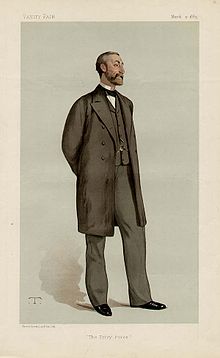크로마틴 조립 인자 1
Chromatin assembly factor 1크로마틴 조립인자-1(CAF-1)은 인간에서는 Chaf1a(p150), Chaf1b(p60) 및 p48 서브유닛을 포함한 단백질 복합체이며, 효모에서는 Cac1, Cac2, Cac3를 포함하여 세포주기의 [1][2][3][4]S단계 동안 복제 DNA에 히스톤 4중합체를 조립한다.
기능.
CAF-1은 새롭게 합성된 히스톤 H3/H4를 사분자화하여 복제 [5][6][7]포크 뒤에 빠르게 DNA에 축적함으로써 뉴클레오솜 형성의 첫 단계를 매개하는 히스톤 샤페론 역할을 한다.세포질에서 H3, [4]H4를 합성한다.여러 연구에 따르면 CAF-1과 PCNA(복제 분기점에서 CAF-1을 안정화시키는 세포핵항원) 사이의 상호작용은 핵소체[8] 조립에서 CAF-1의 역할에 중요하다.
3개의 서브유닛이 함께 작용하여 복잡한 기능을 합니다.인간 서브유닛(p150)은 슬라이딩 클램프 역할을 하는 PCNA와 상호작용하여 CAF-1 복합체가 DNA 복제 포크와 상호작용하는 것을 돕는다.또한 p150은 PCNA와 함께 손상된 DNA를 고정하기 위해 뉴클레오티드 절제 수복을 실시한다.P60은 H3/H4의 히스톤 샤페론인 ASF1a/b와 상호작용한다.p48은 CAF-1 이외의 역할을 하지만 복합체와 관련된 경우에는 H4와 [4]결합한다.
p60은 H3/H4의 보호자인 ASF1a/b를 끌어당겨 PCNA와 상호작용하여 레플리케이션 포크에 부착하는 p150과 복합체 내에 있다.CAF-1 복합체는 복제 [4]포크 앞에 히스톤을 DNA에 추가합니다.
p150의 돌연변이가 기능 상실을 초래하면 이중 가닥 절단, 복제 포크 중단 및 전송이 발생합니다.p60에서 기능 상실은 H3/H4에 대한 히스톤 샤페론이 복합체와 상호작용하지 않음을 의미한다.어느 서브 유닛에서도 이와 같은 돌연변이는 CAF-1 복합체 전체의 기능 상실을 초래할 수 있다.그러나 p48의 기능 상실은 복합체가 크로마틴을 얼마나 잘 보호할 수 있는지를 변화시키지만 전체적으로 [4]염색질을 멈추지는 않는다.
역할
CAF-1은 만능배아세포에서 헤테로크로마틴 도메인의 공간구성 및 후생유전학적 마킹에 필요하며, 세포 [9]분화 중에 체세포 동일성의 세포기억을 생성한다.
배아줄기세포에서 [10]CAF-1의 염색질조립활성 다운조절을 통해 2단 마우스배아(전능세포)와 유사한 세포를 체외로 유도할 수 있다.
CAF-1은 CCR4-Not과 데데닐라아제 복합체를 형성하며, 관련 없는 CCR4와 혼동해서는 안 된다.CAF-1/CCR4-Not complex는 릴리스 팩터 eRF3 및 PABPC1과 연계하여 [11]변환 중에 mRNA의 폴리(A) 꼬리를 단축합니다.
레퍼런스
- ^ Fang, Dong; Han, Junhong (2020-11-06). Histone Mutations and Cancer. Springer Nature. ISBN 978-981-15-8104-5.
- ^ Smith S, Stillman B (July 1989). "Purification and characterization of CAF-I, a human cell factor required for chromatin assembly during DNA replication in vitro". Cell. 58 (1): 15–25. doi:10.1016/0092-8674(89)90398-X. PMID 2546672. S2CID 10515064.
- ^ Hoek M, Stillman B (October 2003). "Chromatin assembly factor 1 is essential and couples chromatin assembly to DNA replication in vivo". Proceedings of the National Academy of Sciences of the United States of America. 100 (21): 12183–12188. Bibcode:2003PNAS..10012183H. doi:10.1073/pnas.1635158100. PMC 218733. PMID 14519857.
- ^ a b c d e Volk, Andrew; Crispino, John D. (August 2015). "The role of the chromatin assembly complex (CAF-1) and its p60 subunit (CHAF1b) in homeostasis and disease". Biochimica et Biophysica Acta (BBA) - Gene Regulatory Mechanisms. 1849 (8): 979–986. doi:10.1016/j.bbagrm.2015.05.009. ISSN 0006-3002. PMC 4515380. PMID 26066981.
- ^ Liu WH, Roemer SC, Zhou Y, Shen ZJ, Dennehey BK, Balsbaugh JL, et al. (September 2016). "The Cac1 subunit of histone chaperone CAF-1 organizes CAF-1-H3/H4 architecture and tetramerizes histones". eLife. 5: e18023. doi:10.7554/eLife.18023. PMC 5045291. PMID 27690308.
- ^ Sauer PV, Timm J, Liu D, Sitbon D, Boeri-Erba E, Velours C, et al. (March 2017). "Insights into the molecular architecture and histone H3-H4 deposition mechanism of yeast Chromatin assembly factor 1". eLife. 6: e23474. doi:10.7554/elife.23474. PMC 5404918. PMID 28315525.
- ^ Mattiroli F, Gu Y, Yadav T, Balsbaugh JL, Harris MR, Findlay ES, et al. (March 2017). "DNA-mediated association of two histone-bound complexes of yeast Chromatin Assembly Factor-1 (CAF-1) drives tetrasome assembly in the wake of DNA replication". eLife. 6: e22799. doi:10.7554/eLife.22799. PMC 5404915. PMID 28315523.
- ^ Zhang Z, Shibahara K, Stillman B (November 2000). "PCNA connects DNA replication to epigenetic inheritance in yeast". Nature. 408 (6809): 221–225. Bibcode:2000Natur.408..221Z. doi:10.1038/35041601. PMID 11089978. S2CID 205010657.
- ^ Houlard M, Berlivet S, Probst AV, Quivy JP, Héry P, Almouzni G, Gérard M (November 2006). "CAF-1 is essential for heterochromatin organization in pluripotent embryonic cells". PLOS Genetics. 2 (11): e181. doi:10.1371/journal.pgen.0020181. PMC 1630711. PMID 17083276.
- ^ Ishiuchi T, Enriquez-Gasca R, Mizutani E, Bošković A, Ziegler-Birling C, Rodriguez-Terrones D, et al. (September 2015). "Early embryonic-like cells are induced by downregulating replication-dependent chromatin assembly". Nature Structural & Molecular Biology. 22 (9): 662–671. doi:10.1038/nsmb.3066. PMID 26237512. S2CID 837230.
- ^ Funakoshi Y, Doi Y, Hosoda N, Uchida N, Osawa M, Shimada I, et al. (December 2007). "Mechanism of mRNA deadenylation: evidence for a molecular interplay between translation termination factor eRF3 and mRNA deadenylases". Genes & Development. 21 (23): 3135–3148. doi:10.1101/gad.1597707. PMC 2081979. PMID 18056425.
추가 정보
- Cheloufi S, Elling U, Hopfgartner B, Jung YL, Murn J, Ninova M, et al. (December 2015). "The histone chaperone CAF-1 safeguards somatic cell identity". Nature. 528 (7581): 218–224. Bibcode:2015Natur.528..218C. doi:10.1038/nature15749. PMC 4866648. PMID 26659182.
- "Memory loss enables the production of stem cells". ScienceDaily (Press release). December 9, 2015.
- Yu Z, Liu J, Deng WM, Jiao R (January 2015). "Histone chaperone CAF-1: essential roles in multi-cellular organism development". Cellular and Molecular Life Sciences. 72 (2): 327–337. doi:10.1007/s00018-014-1748-3. PMID 25292338. S2CID 18355941.
- Kaufman PD (September 2015). "Want reprogramming? Cut back on the chromatin assembly!". Nature Structural & Molecular Biology. 22 (9): 648–650. doi:10.1038/nsmb.3081. PMID 26333710. S2CID 33569420.
- Polo SE, Almouzni G (December 2015). "Chromatin dynamics after DNA damage: The legacy of the access-repair-restore model". DNA Repair. 36: 114–121. doi:10.1016/j.dnarep.2015.09.014. PMC 5113751. PMID 26429064.
- Wang Z, Wu R, Nie Q, Bouchonville KJ, Diasio RB, Offer SM (March 2021). "Chromatin assembly factor 1 suppresses epigenetic reprogramming toward adaptive drug resistance". Journal of the National Cancer Center. 1 (1): 15–22. doi:10.1016/j.jncc.2020.12.003. S2CID 234287367.
- Sauer PV, Gu Y, Liu WH, Mattiroli F, Panne D, Luger K, Churchill ME (November 2018). "Mechanistic insights into histone deposition and nucleosome assembly by the chromatin assembly factor-1". Nucleic Acids Research. 46 (19): 9907–9917. doi:10.1093/nar/gky823. PMC 6212844. PMID 30239791.



